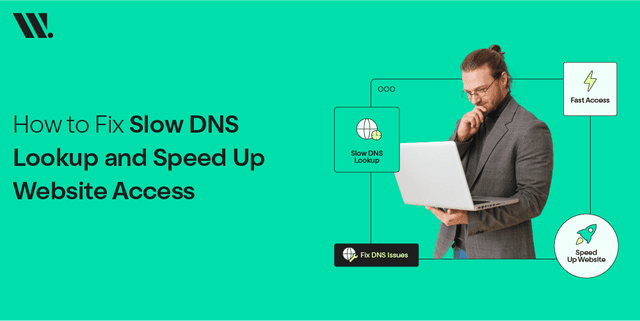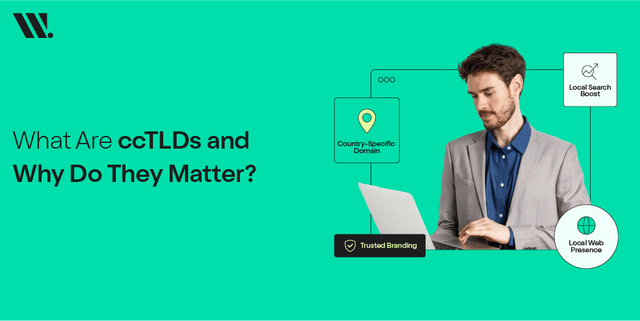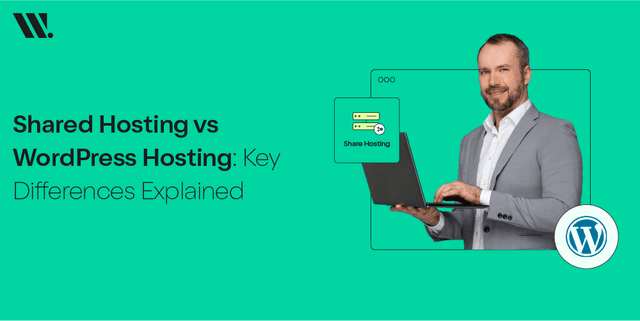In a tech world, being a full-stack web developer is being a tech superhero!
He is capable of handling both, the front-end and the back-end of web and software development in powerful ways. They know how to use various technologies from databases, systems engineering, user interfaces, and servers.
Read till the end and discover more interesting things about Full Stack Developer and what role they play in building modern digital projects.
Who is a Full-Stack Developer?
A Full Stack Developer is a person with a degree in both front-end and back-end development. In simple words, they can create a whole new website or mobile application from scratch.
On the front-end side, they deal with everything that the user can see and interact with during his time on the site. It includes layout, design, buttons, and the overall user experience. Then, on the back end, they take care of everything behind the scenes. Such as databases, servers, and application logic, that make sure everything goes down nicely.
Full Stack web Developer is unique because he can navigate more than one programming language and framework as well as tools throughout the project. These developers can build a dynamic website, develop mobile apps, troubleshoot complex system issues and everything in between.
Given their experienced skill set, they are a valuable resource to have on a team. They can bridge the gap between the user experience and the technical functionality of your application. Which results in a beautifully organized, all-in-one end product.
Full Stack Developer Skills
A Full Stack Developer is a jack of all trades, and their skill set fits the bill. To be successful in this role, they must have experienced skill set in front and back-end development.
For a full-stack web developer, understanding UI/UX design principles is essential to create a useful interface that is pleasing to the eye and easy to navigate. When engaging with UI/UX design services, or when adopting those abilities themselves, full stack developers are capable of making optimized and visually appealing web designs that meet end users’ preferences.
Besides this, for full-stack web development, WordPress development experts have an advantage. This can be used to build powerful content management systems that combine front-end design with back-end functionality. Using WordPress developer skills, full-stack developers can offer complete solutions to businesses wanting to build responsive, content-rich, functioning websites quickly.
Key Skills of a Full Stack Developer:
- Front-End Development: Buildings visually attractive and user-friendly interfaces require learning languages like HTML, CSS, and JavaScript. To be a Full Stack Developer, you should be comfortable in building responsive, dynamic websites, using front-end frameworks like React native development services, Angular or Vue.js.
- Back-End Development: Of course, the programming languages like Python, Java, Ruby, PHP, or Node.js they enter on the back end are necessary for creating the core logic of an application. Along with frameworks like Django, Flask, or Express, they also work with.
- Databases and Storage: A big part of their job is managing and interacting with databases. Full Stack Developers should know how to work with both SQL databases (such as MySQL & PostgreSQL) and NoSQL databases (such as MongoDB) to store and manage data professionally.
- Version Control: Tools such as Git, and the use of GitHub to help manage a project's code, track changes to it, and collaborate with other developers on the same project. And they do it without losing work or overwriting code, which is very important.
- APIs: To become a Full Stack Developer individual, you must be easy with APIs (Application Programming Interfaces) and web services. In most solutions, they constantly need to create and use RESTful APIs or SOAP APIs so that different parts of an application can communicate.
- Server Management: Ideally, they should be familiar with servers and cloud services (AWS, Google Cloud or Azure) for deploying, hosting and maintaining applications.
- Problem-Solving: The Full Stack Developer takes care of talking to the users (front) and the intermediate layer (middle) along with the technical code for the whole application, so their problem-solving skills are required to solve problems, find solutions and fix issues very quickly.
- Soft Skills: This role is a key factor in communication because often they work with designers, project managers, and other developers. They also need to have the ability to time manage and adapt to the different technologies so there’s a wide range of tasks on their plate.
Simply stated, Full Stack Developers are the developmental Swiss Army knife, being equipped with a variety of skills that allow them to work from all sides to solve projects in a timely fashion, providing functional but great-looking solutions.
Understanding of Main Development Types: Front-End & Back-End
In the world of web development, the process is typically divided into two main areas: front-end and back-end development. All play a crucial role in setting up a fully functioning website or application. All of them come together to deliver uninterested online experiences.
The User Side – Front End Development
From front front-end development point, it focuses on all the things that we want users to see and do in their browsers directly. This includes the Layout, Look and Feel of the website or app, to ensure that it's visually appealing, responsive as well and user-friendly. The core technologies that front-end developers work with include:
- Used for structuring content with HTML (Hypertext Markup Language).
- Styling and design elements in a CSS (Cascading Style Sheets).
- It uses JavaScript for adding interactivity, animations and dynamic content.
Frameworks like React, Angular, and Vue.js are often used by front-end developers to make the whole process easier and create highly responsive, modern web applications. The aim is to provide a good UX on top of all devices (desktops to mobile phones) and to do this intuitively.
The “Server Side” - Back End Development
The front end of what the user sees, and the back end of what’s making a living the user sees. What the user doesn’t directly interact with — such as databases, servers, and application logic — is handled by back-end developers. This part of the development process assures timely and secure data flow between the server and the front end.
Key elements of back-end development include:
- Server-side programming Languages include Python, Ruby, PHP, Java and Node.js.
- However, you would need to create a database of MySQL, PostgreSQL or MongoDB to store and manage your data.
- Articles, tutorials and walkthroughs about building your static website generator using frameworks like Django, Flask, or Express.js to simplify and speed up the development process.
- As back-end developers, they are also responsible for making sure that data is secure, to ensure privacy, and that server requests are handled to keep the application running properly.
It’s important to make sure the user interface works properly and also connect the user interface to the database.
Balancing of Front End and Back End
Front-end and back developers work together hand in hand to form the whole picture. On the front end (front-end development), the interface and experience are the responsibility of creating them, while the back end (back-end development) is responsible for the application being efficient behind the scenes.
However, the gap can be bridged by Full Stack Developers who are skilled in both, and who will take care of the whole project from the layer of user interaction down to the core functionality.
Knowing the Different Types of Full-Stack Developers
There are so many languages, frameworks and platforms to choose from and businesses have to pick the right people with the right skills for their project.
Such as Laravel developer has a significant position in the sphere of full-stack web development, especially in the back-end programming area. They develop unique, responsive and modern web interfaces of virtual resources that meet both usability and safety requirements. Laravel aligns well with any full-stack developers and its flexibility and ease of use are one of the key factors that make it ideal for the development of performance applications.
By knowing what kind of developers, you need you will be able to hire only the necessary people, and thus save time and money as well as improve the project productivity.
4 Types of Full Stack Developers
Let’s take a closer look at some of the most popular types of full stack web developers:
1. .NET Full Stack Developer
A .NET full stack developer is a Microsoft .NET framework full stack developer, who possesses skills to use one of the most popular platforms. To develop applications that are robust, scalable, secure enterprise applications. It's powerful, and used for server-side web development; ASP.NET and C# are very good languages for building efficient applications.
In terms of front-end development, .NET full-stack developers will usually use HTML, CSS and JS frameworks, such as React or Angular to build interactive, responsive user interfaces. They also spend a lot of time working with SQL Server to manage data like inserting, retrieving and managing data efficiently.
If you care about your organization’s reputation and want a stable, secure program, .NET is a great choice for the program — whether your organization is in the finance, healthcare, or corporation arena. Since they have full-stack developer skills these people can build and maintain applications which can handle huge volumes and complex workflows and at the same time maintain strong security protocols.
2. Java Full Stack Developer
Another language for full stack developers is Java because of its versatility, security and Scalability. A Java full stack developer is comfortable using Java as the back end of both web and mobile app development services. Spring Boot, along with other powerful frameworks, exists in Java and helps developers develop complex systems that can scale and evolve further as the demands of the user continue to grow.
Usually, a Java full stack developer couples his back-end intelligence with the most recent front-end frameworks of React or Angular. It's a combination of full-stack web development with React and the Java language, that can create dynamic, interactive, fast-loading applications.
They have the skills to manage databases properly, from using the systems like MySQL, MongoDB or PostgreSQL which make it possible to cope with large amounts of data effectively. For large-scale projects where high performance and security are paramount, Java developers like the one above are favorites for e-commerce platforms or banking apps.
3. MERN/MEAN Full Stack developer
The MERN stack (MongoDB, Express.js, React, and Node.js), or its siblings MEAN (MongoDB, Express.js, Angular, and the Node.js runtime), is one of the most popular stacks out there for modern web apps. MERN AND MEAN are full-stack web developer technologies which means that the full-stack developers are the ones who are behind the wings and who work with everything from the front-end scripting to the server-side scripting.
MERN developers are used to React, which is great at rendering flexibly, and MEAN developers create single-page applications using Angular, a powerful framework. They run the backend on Node.js which lets them write fast scalable network applications with JavaScript on the server side.
MERN means me, node.js, express, react; MEAN means MongoDB, express, Angular, node.js. Using MongoDB which is a NoSQL (not a SQL DB) allows these developers to handle big datasets so, the MERN/MEAN stack works well for real-time apps like the chat app, collaboration tool, or its interactive dashboard. Favorited by startups and tech companies with a focus on speed, flexibility and scalability, these are full-stack web developer technologies.
4. Python Full Stack Developer
Python full stack developer uses Python as the back end and frameworks like Django or Flask to rapidly build a robust application. Python is popular because it can be read, especially given its simplicity, and works at a reasonable speed for higher computing speeds.
In terms of the front end, Python full stack developers work with standard tools such as HTML, CSS and JavaScript (usually with React or Angular). Python is very versatile; you can use it for almost everything from web apps to data-driven solutions like machine learning projects. In addition, they are familiar with databases such as SQLite, MySQL, and PostgreSQL, among other things, to properly run data.
Typically, Python full stack developers are sought out in industries including AI, data science, and automation as Python is capable of so much!
Choose Websouls for Web Development Services
Here at WebSouls, we know that it is extremely important that you have the right person working on your project. From .NET full stack developer, and Java full stack developer to full stack web development with React experiences, whatever you need our team is ready to serve you with top-tier results.
Partnering with WebSouls means choosing a team that understands the full stack developer skills in building powerful, efficient and secure applications. Whether you have a plan for custom software, a dynamic website, or a new mobile app - we have the experience to bring your vision to life.
Reach out to us for more info. On how we can help improve your business using our web development services!
FAQs
What is front-end development?
The part of web development dealing with visual elements and user interface of a website or application is referred to by front-end development. But it involves coding in languages like HTML, CSS and JavaScript so that users enjoy a smooth and dynamic user experience.
Is web development a good career?
Yes! Web development is a career that pays well and is in demand across disciplines. There are a lot of opportunities for front-end or back-end development. Also, you can work on competitive salaries, and work remotely if you want to and there is continuous learning with the new technologies coming out.
What’s the best language for web development?
Not all projects need the same language for web development. Front end: HTML, CSS and JavaScript are common languages to use; back end: PHP, Python, Ruby and Java are common languages used. A mix of these languages most often makes the base of the successful web projects.
What exactly is web development UI and UX?
The UI (User Interface) design involves arranging the visual elements of a website or application (like a button, an icon, and the layout) to make a user interface neat and pleasant to use. In contrast, UX (user experience) design focuses on the total user journey, making sure it is smooth, easy and fun to participate. Creating websites that function and are user-friendly requires both UI and UX.






